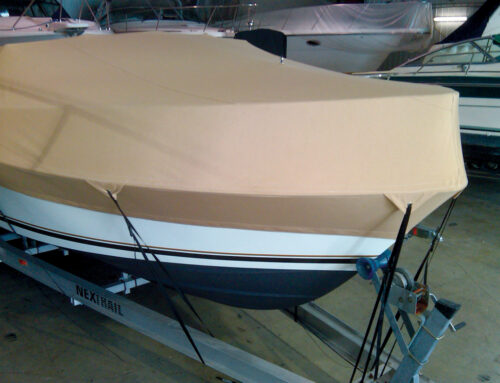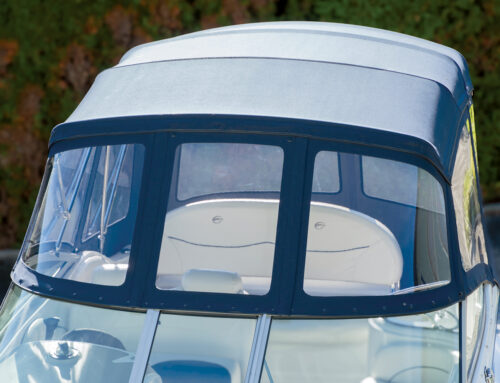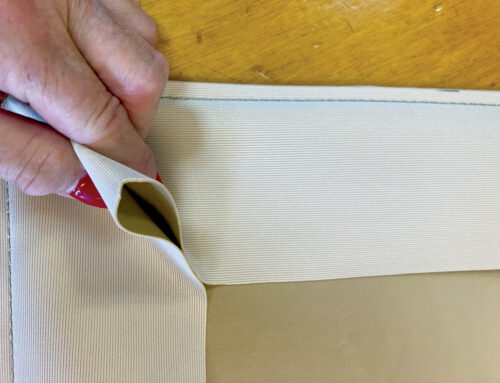Tools to make things easier
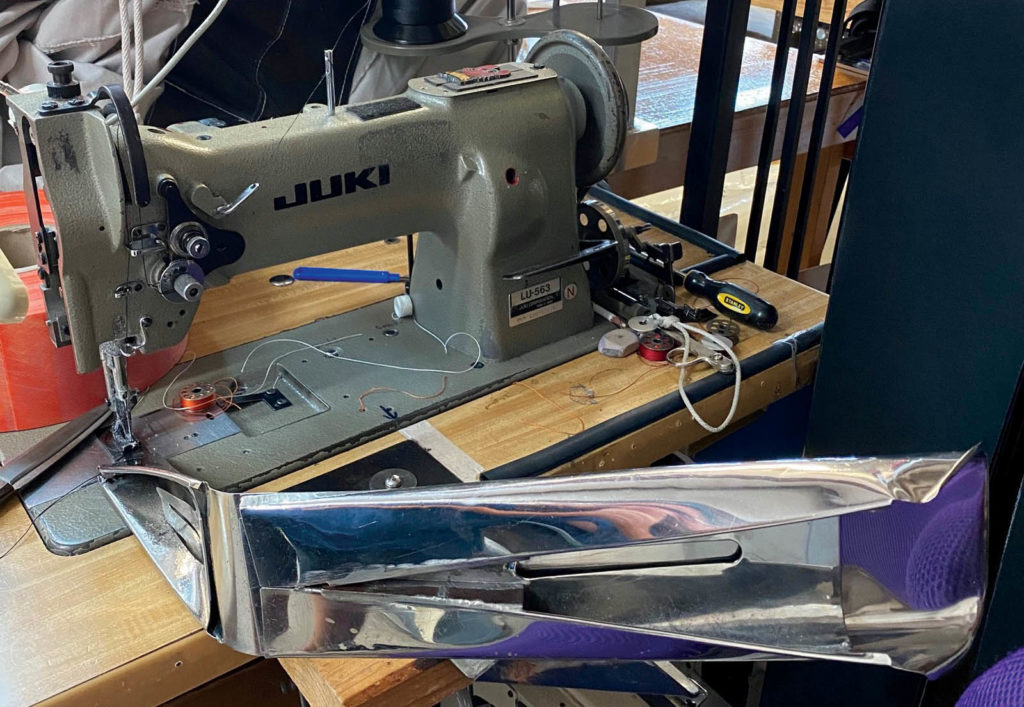
The Boatswain’s Locker in Jacksonville, Fla., was founded in 1961 by my father, Charles W. Bransford, as a shop specializing in custom boat canvas and sails. At that time, there was a lot of handwork that required many hours to complete a job. Since then, many time-saving and more productive methods and tools have been developed to enhance the production and quality of the boat canvas being produced today.
There are several tools that we have made or had made over the years to help make our jobs easier. Most deal with things we do repetitively to aid in making parts the same every time. Others are obviously power tools to help save our hands and fingers from excessive wear.
Templates
Templates are usually made from wood or polycarbonate. They are cut into shapes or lengths and used as cutting guides for sewing certain parts together. For example, a 5-by-62-inch piece of wood or plastic can be used as a guide to cut strips without having to measure or draw each one. Another example is a radius guide that can be used to draw the curves of a U-zip on a piece of clear vinyl.
Sewing machine attachments
There are a variety of sewing machine attachments that can improve your processes and efficiency. One useful attachment installed on one of our sewing machines is a pre-folder that folds the zipper strips used on our enclosure curtains. We sew the strip as it exits the folder, and it gives a uniform part for the side of glass curtains or the edge of fabric curtains where zippers will be sewn.
We have different sized attachments for other parts. These were made by the Atlanta Attachment Co. (www.atlatt.com).
You can send the company the finished part you need, and it can make a sewing machine attachment that will help you build it.
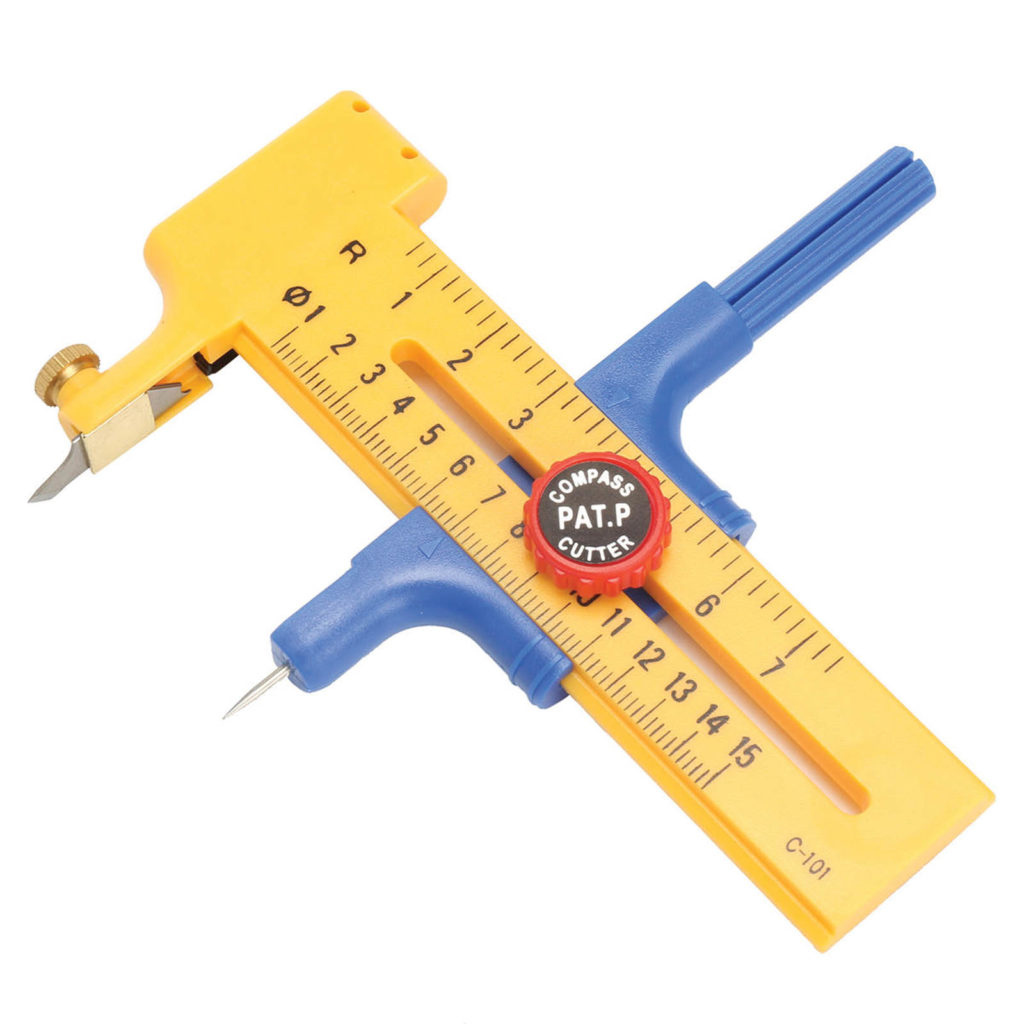
Edge stripper
Many different tools can be used to strip a portion of the protective film from polycarbonate. We strip the film just above the stitch line on the inside of the fabric. This makes it easily removable. A straight, clean cut is necessary, so a sharp edge is critical. In the past, we used razor blades with a straightedge, but it’s too easy to slip off or cut deep. We even used a sharp knife, but it’s hard to control.
The one we use now is called a compass cutter. They are inexpensive, can be easily adjusted for various widths and come with replaceable blades that can be bought separately. There are several brands and sources to choose from and you can find them online and at sewing and office supply stores.

Polycarbonate cutter
We have tried many different tools to cut polycarbonate. Most were hand tools similar to metal shears, heavy-duty scissors and the like. But because of the volume of polycarbonate we use—600 to 1,000 sheets of 30-gauge and 300 to 600 sheets of 60-gauge per year—we needed a power tool.
So, we looked for a battery-powered metal shear. Again, there are several brands, and we decided on a DeWALT®. It has an adjustable cutting blade and holds up well. The original is eight years old and is still working well. It does a good job with cutting curves and angles and provides a clean edge.
Variable speed motors
Replacing old-style sewing machine motors with the new variable speed versions will greatly improve your sewing skills. The new ones allow you to reduce speeds for sewing difficult or detailed projects. Clutch motor pedals need to be pumped to allow you to control the speed. At lower speeds you don’t have full power, making for an even more difficult situation.
With a variable speed motor, you can turn down the rpm but still have the full power of the motor. This is especially good for teaching new sewers; they are much less intimidated by the machine.
We retrofit some of our machines with Consew® brand motors and controllers, and our new Adler machines came with servo motors. You can purchase servo motors to retrofit any machine.
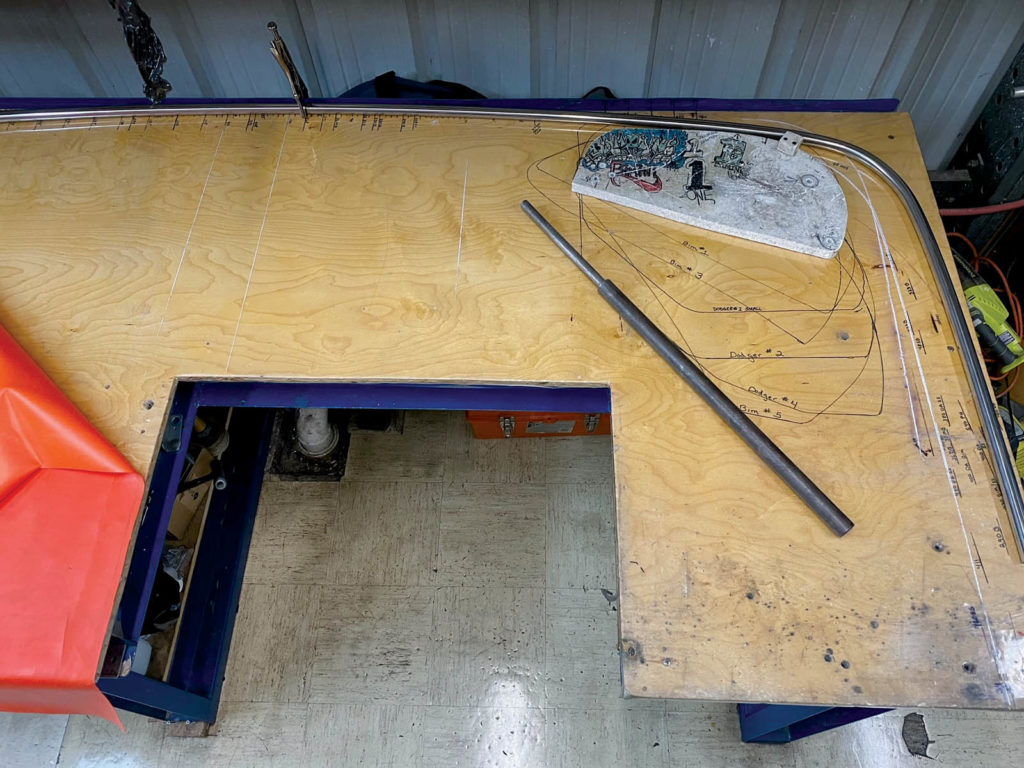
Hand bending table
Bending frames is a primary function for many marine shops. We use a table setup to allow bending from the center of the frame. This allows us to make the frames symmetrical, which also allows us to make half patterns on the boat, which saves time and pattern material.
Our bending table is approximately 4 by 10 feet. We have various wooden dies for different radii. There are also dies for putting crown in the width of the frame, which is necessary on wider tops to allow for drainage. The wooden dies eliminate any scratching of the tubing. The table has a measurement scale at the top. Clamping the tubing to an angle iron running the length of the table at the desired width allows you to bend one side and then flip the tubing to bend the other side. We bend every size tubing from 7/8 inch to 1¼ inch stainless. Over the years, I have seen many different bending tools, but none have given me a desire to change from our table.
Spread the word
The tools I’ve described, along with our patterning methods, automated cutting table, photo imaging and many more advances continue to make our job easier, and I’m happy to share these techniques with others. In the past, when I started in this business, fabricators didn’t share as widely, and they more often guarded their sources and techniques. Fortunately, the Industrial Fabrics Association International and the Marine Fabricators Association are great places for fabricators to share their ideas and methods.
I urge you to share your techniques and tools with all of our colleagues. We need to encourage each other and increase the number of people in our trade, and that requires our willingness to share our skills and knowledge.
William Bransford has been the CEO of WJB Inc. since 1975. He oversees sales and operations for Boatswain’s Locker, Jacksonville, Fla., and Covermytractor.com. He was an E7 Chief in the U.S. Navy from 1964 to 1989, and he is a longtime machinist. Boatswain’s Locker specializes in custom work for individual boat owners and OEM production for boat manufacturers.
 TEXTILES.ORG
TEXTILES.ORG 


